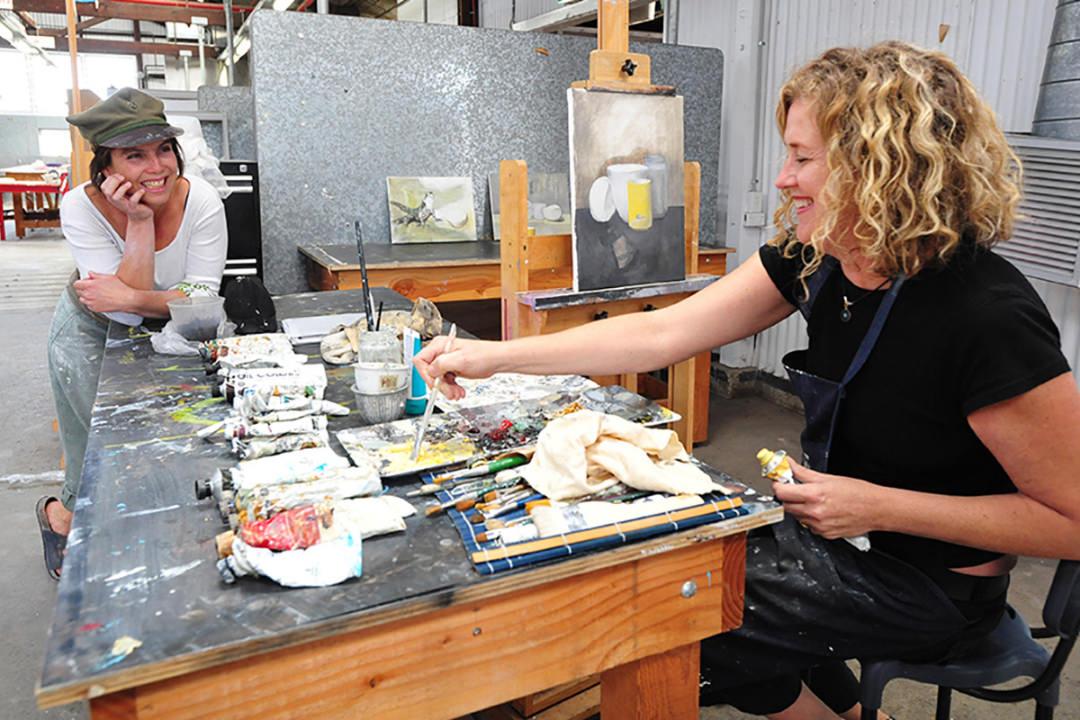Ann Gordon, Parramatta Female Factory matron
Ann Gordon, Parramatta Female Factory matron
Learn the story of Ann Gordon, the longest serving matron at the Parramatta Female Factory.
Learn the story of Ann Gordon, the longest serving matron at the Parramatta Female Factory.
Whether you're jumping onto a bicycle as your preferred form of exercise, to escape peak hour traffic or to just simply pedal and explore, the cycling routes around Parramatta are a great way to get around.
A leisurely loop around Parramatta Park that is suitable for riders of all skill levels. This route goes for about 3.2 kilometres and is relatively easy and undulating as it passes by many landmarks including historic buildings like Old Government House and the Dairy Cottage as well as the Boer War Memorial and The Crescent (a natural amphitheatre). Portions of the main track is also located along the banks of the Parramatta River, making for a leisurely riding experience.
Within the park, Long Avenue (a 600-metre path running parallel to Domain Creek) is ideal for even less-experienced riders and kids, as it is separated from the internal road and only accessible by authorised vehicles.
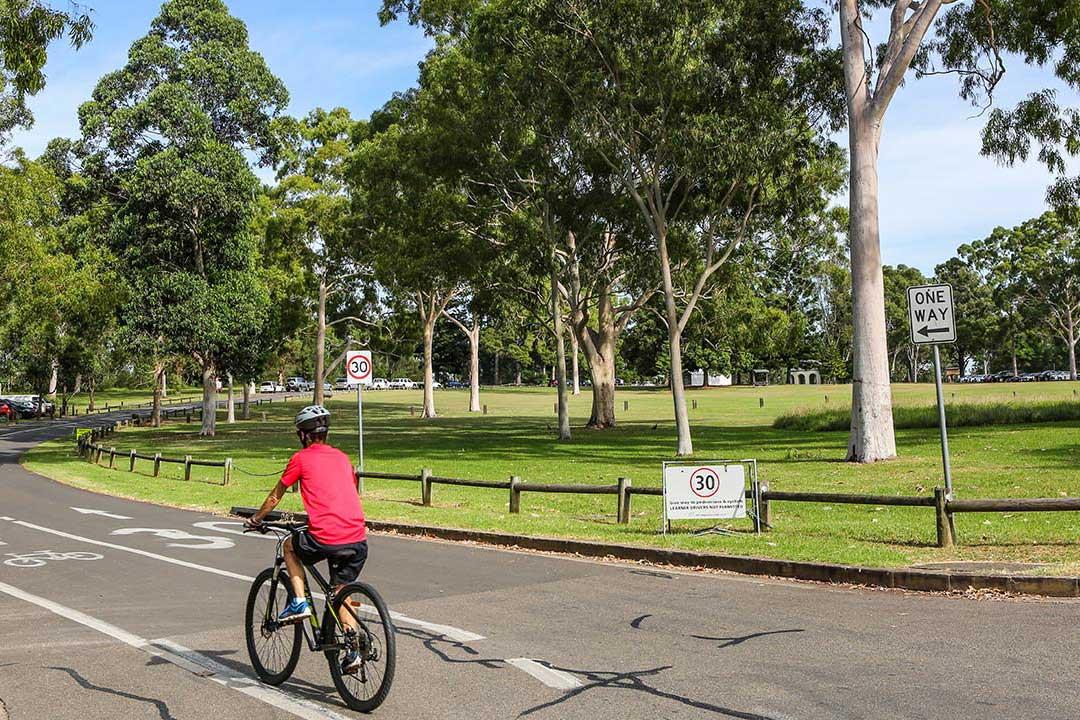
If you're looking to uncover and learn more about this city's history, the Parramatta Heritage Ride offers a great opportunity to explore stories of years past on bicycle.
Sign up for an official guided tour (an amazing experience) or view the City of Parramatta's Cycling and Heritage map if you fancy navigating on your own.
One of the most popular routes starts at the Macquarie Street Gatehouse, passes by the Dairy Precinct, Jail and Old Government House and finishes back at Centenary Square and Town Hall.
The Parramatta Valley Cycleway is a 20-kilometre-long path shared by cyclists and pedestrians that follows the Parramatta River. Cyclists can ride the relatively flat route from Morrison Bay Park in Ryde through the Ermington Nature Reserve and along the River foreshore to the Parramatta CBD.
The Cycleway follows the River providing some pleasant outlooks, heritage buildings and nature reserves. From Morrison Bay Park in Ryde, the path heads west along a combination of dedicated bike paths, quiet streets and the river foreshore. Riders can continue to Parramatta CBD or Parramatta Park or explore the connection to Sydney Olympic Park via the Silverwater Bridge.
The cycle route is constantly being improved. Recently opened is the Escarpment Boardwalk, a river-level pedestrian and cyclist connection that delivers a missing link in the Parramatta Valley Cycleway. Riders can now stay on the northern banks of the river near the Parramatta CBD.
One of the many legacies of the Sydney Olympic Games 20 years ago is the 35 kilometres of cycleways for bike riding within Sydney Olympic Park which are ideal for cyclists of all skill levels. The Park Authority has mapped out several circuits that are suitable for different levels of rider. Most are close to other facilities such as playgrounds, picnic areas, drinking stations and toilets. The circuits take in Olympic Games venues, bird habitat, heritage areas like Newington Armory, lakes, and great views.
Sydney Olympic Park has plenty of cafes and restaurants to make a quick stop for a coffee or even a meal.
The roads within Sydney Olympic Park also have many on-road cycle lanes for those who prefer to ride on the road, with a number of well used, relatively flat circuits.
An almost completely off-road cycleway that travels alongside the T-way bus route and Old Windsor Road, this bike path heads northwest through Constitution Hill, Old Toongabbie, Seven Hill and Norwest all the way to Windsor. For riders keen for a longer and peaceful day out, this might be the path for you.
Sitting in the geographical heart of Greater Sydney is Parramatta, a City representing a cross-section of economic activity, cultural diversity and stirring opportunity. The backbone of this great City is its accessible transport infrastructure, connecting Parramatta to five major transport hubs across the region.
Parramatta is within a 30-minute reach of more than two million people across Sydney. The recently upgraded Parramatta Transport Interchange links train and bus connections under one roof, and with the future Parramatta Light Rail and Metro West only a short walk away, commuters can expect a seamless travel experience.
With ongoing infrastructure planned through to 2023 and beyond, transport development will be the critical link that continues to connect Parramatta to the Greater Sydney region, achieving our 30-minute City vision for years to come.
The Parramatta Light Rail will connect Westmead to Carlingford via the Parramatta CBD and Camellia with a two-way track spanning 12 kilometres, and is expected to open in 2024. It will revolutionise the way workers, residents and visitors move around the Parramatta area. It will link Parramatta’s CBD and train station to:
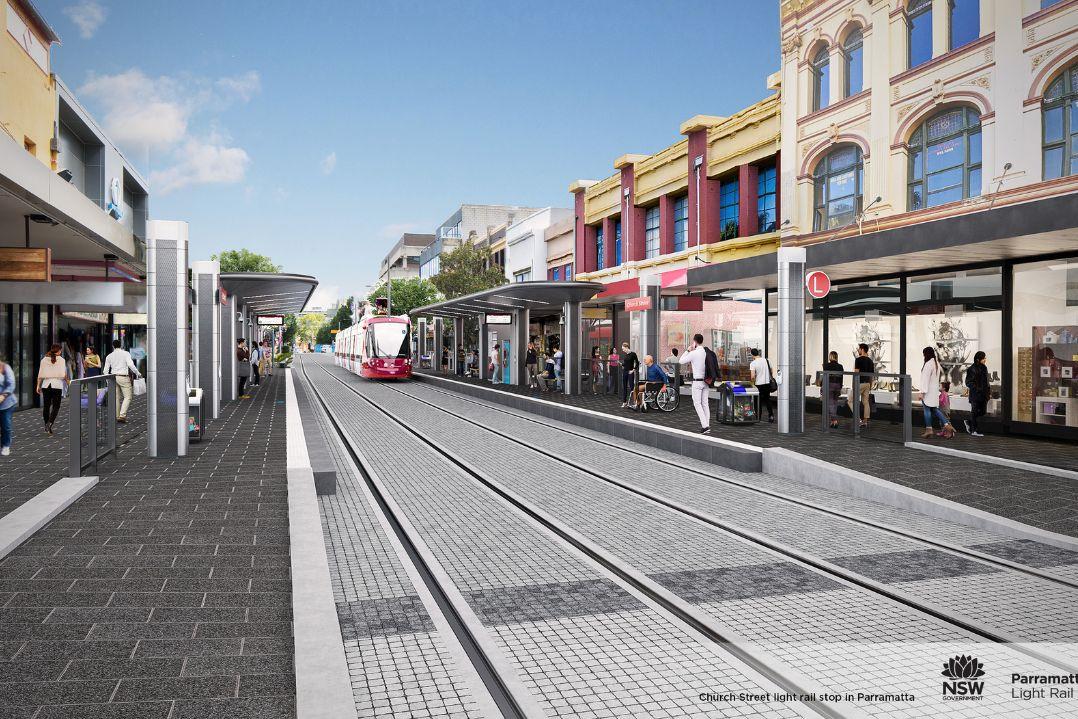
The NSW Government will proceed with Parramatta Light Rail Stage 2, committing $602.4 million to commence the detailed planning process to move ahead with the Western Sydney megaproject. This commitment will go towards early works and building the vital bridge connection across the Parramatta River between Wentworth Point to Melrose Park.
Stage 2 will connect Stage 1 and the Parramatta CBD to Sydney Olympic Park via Camellia, Rydalmere, Ermington, Melrose Park and Wentworth Point. It will connect the local communities in the Greater Parramatta and Olympic Peninsula, and bring the vision of a ‘30-minute city’ closer to reality.
Stage 2 will have 14 stops over a 10-kilometre two-way track, with travel times of around 31 minutes from Camellia to the Carter Street Precinct via Sydney Olympic Park, and a further 7 minutes to the Parramatta CBD.
Find out more about Parramatta Light Rail.
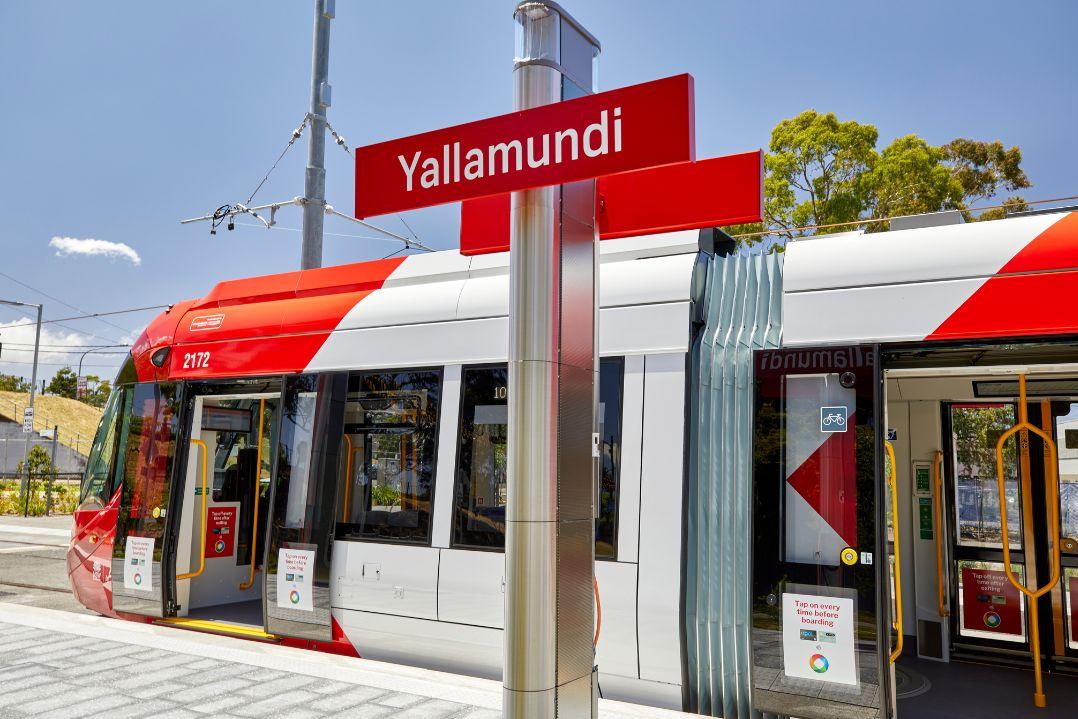
The Sydney Metro West project is a new underground metro railway that will connect the Parramatta and Sydney CBDs. The NSW Government has committed $6.4 billion over 4 years to the project. The new metro railway will:
Likely have stations at Parramatta, Westmead, Sydney Olympic Park, North Strathfield, North Burwood, Five Dock, Bays Precinct and the Sydney CBD.
This route was selected because more travel services are needed between Parramatta and the Sydney CBD. An extra 420,000 people are expected to move into the corridor between Greater Parramatta and Central Sydney over the next 20 years. More than 300,000 new jobs are expected to be created by 2036 in this corridor which includes the Parramatta CBD, Sydney Olympic Park and the Bays Precinct.
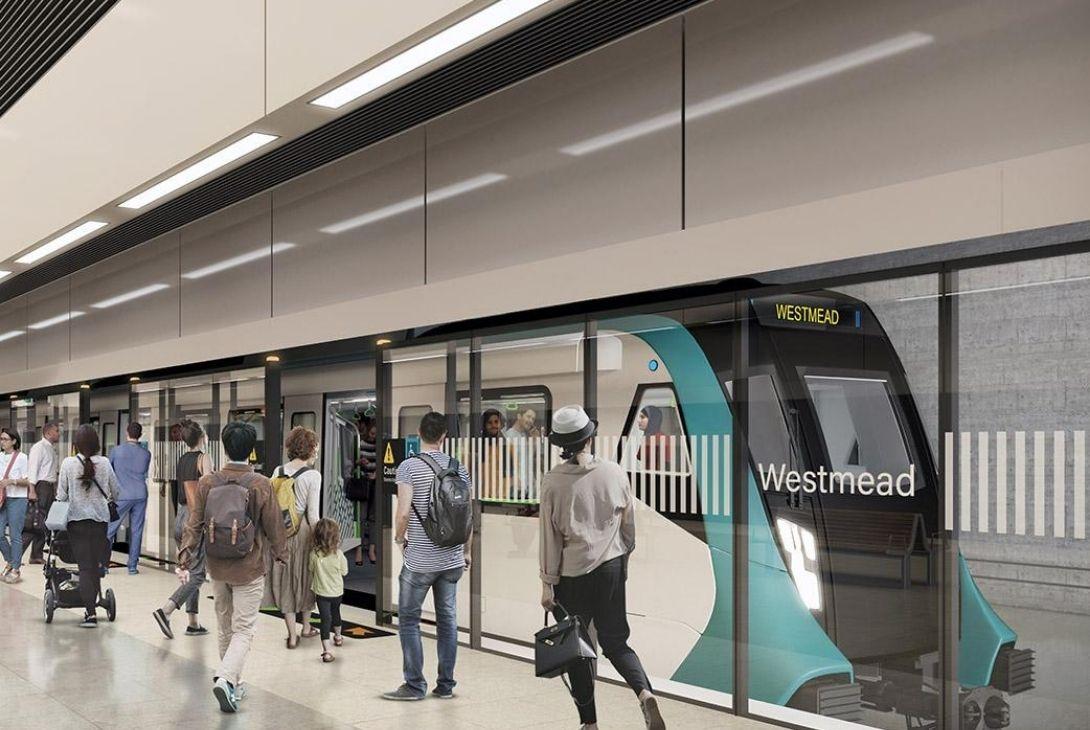
Sydney’s new Airport is set to open to international, domestic and freight flights in 2026, providing much-needed aviation capacity for the entire Sydney region.
In its first stages, Western Sydney International will be a long overdue airport for Western Sydney and its population of two million that continues to grow. The Airport has also led to record investments in the infrastructure the region needs, including new and upgraded roads.
Designed to grow in stages and over decades, the Airport will eventually become one of the biggest gateways to Australia and the primary airport for the entire Sydney region. Qantas Group and Virgin Australia Group have signed MOUs with the Airport and have already commenced discussions about the design of the Airport and potential routes and services.
Find out more about the new Western Sydney airport.

If the name isn’t enough to give you an indication of the kind of services this day spa offers, let us clarify… At Face Body Day Spa, you can look forward to all-over treatments designed to refresh and revitalise your entire wellbeing. Some of the popular services include: steam rooms; scalp massages; spray tans and skin beautification facials as well as mud body wraps, waxing and manicures and pedicures. A delicious lunch menu, with complimentary coffee, tea, herbal tea, and mineral water is also available on request. With treatments starting from $25, and pampering packages available for men, women and couples, there really is something for every face… and body!
67 Victoria Road, Parramatta | 9683 4338 | facebodydayspa@bigpond.com | Facebook | Instagram

An abundance of Thai massage houses line the streets of Parramatta, with many offering excellent value, authentic experiences comparable to those popularly found on the beaches of Phuket. However, if you’re looking for something a little special,Thai Lanna on Phillip Street is certainly worth a try. In addition to Thai massages, other services include hot oil treatments, lemongrass herbal compression balls and foot reflexology. Gift vouchers are also available so drop a hint, surprise your loved one, or treat yourself to a well-deserved opportunity to rejuvenate your way to better physical and spiritual wellness.
28A Phillip St, Parramatta | 0451 384 188 | thailannaspa@gmail.com | Facebook
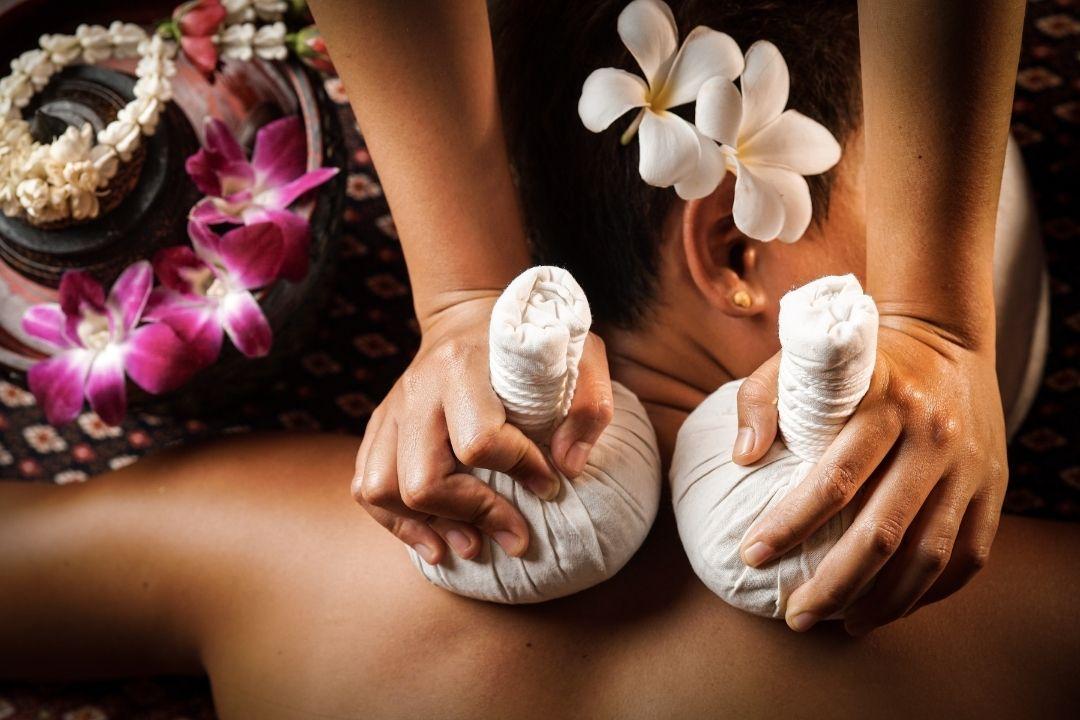
Experience Australia's first Moroccan Hamman, dedicated exclusively for women to relax and unwind. Perfect for brides-to-be or hen parties, it's the place to come for the ultimate Queen treatment. The spa is decked out with mood lighting, rose petals and intoxicating scents and fitted out with beatiful authentic interiors and furnishings from Marrakesh. You can get top-to-toe treatment, all from plant-based natural products, that will leave you glowing.
31 Grose St, Parramatta | 0451 933 544 | info@moroccanhammam.com.au | Facebook
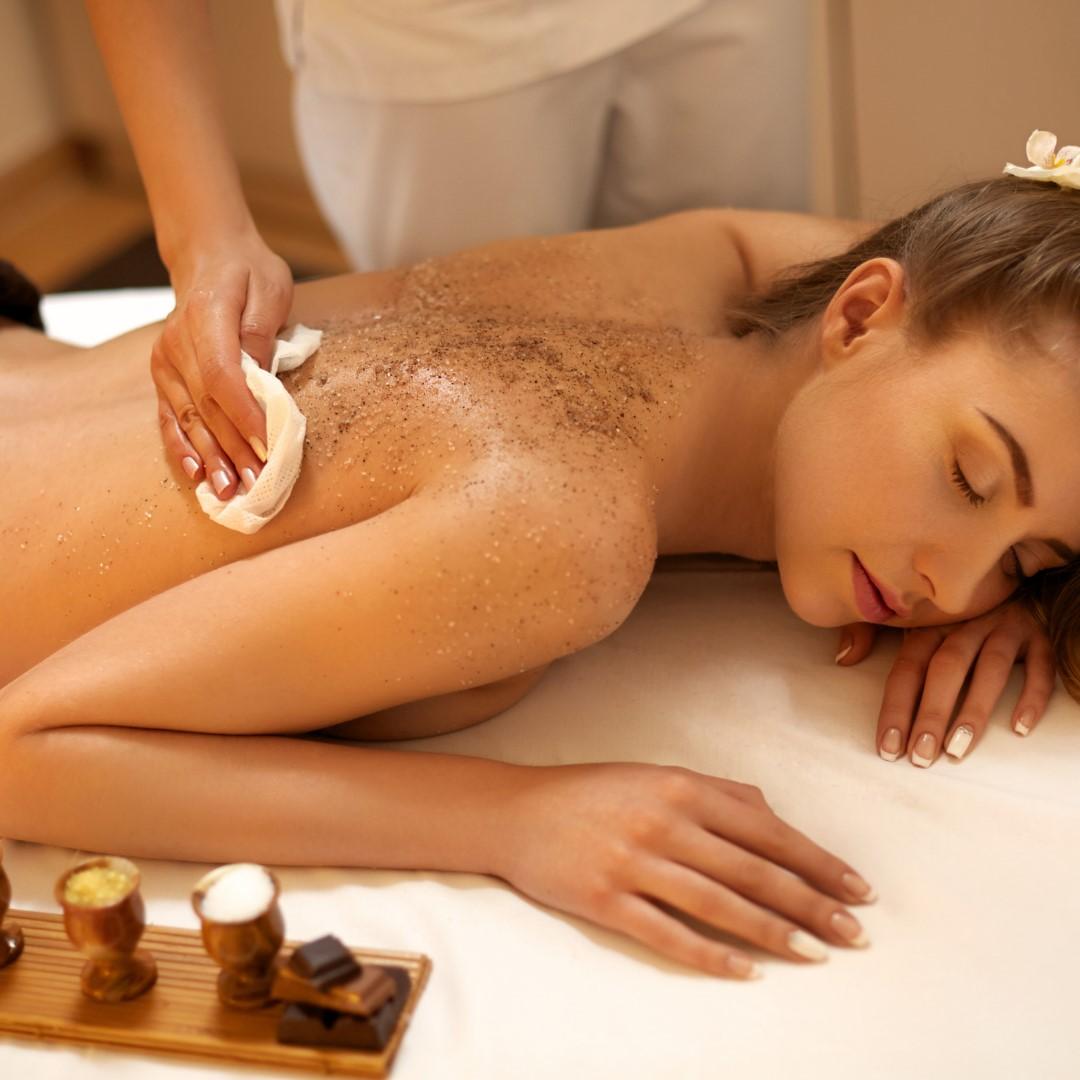
Looking for a little lift, but not quite sure exactly what it is? Fortunately, the team of experts at Australian Skin Clinics are available to guide you through their list of treatments (everything from laser to lip plumping!) and offer their suggestions. As well as studying your skin and understanding your lifestyle, each Australian Skin Clinics beauty therapist will use her experience to help you determine the most effective treatment for you.
Shop 4011, Level 4, Westfield Parramatta, 159-175 Church Street, Parramatta
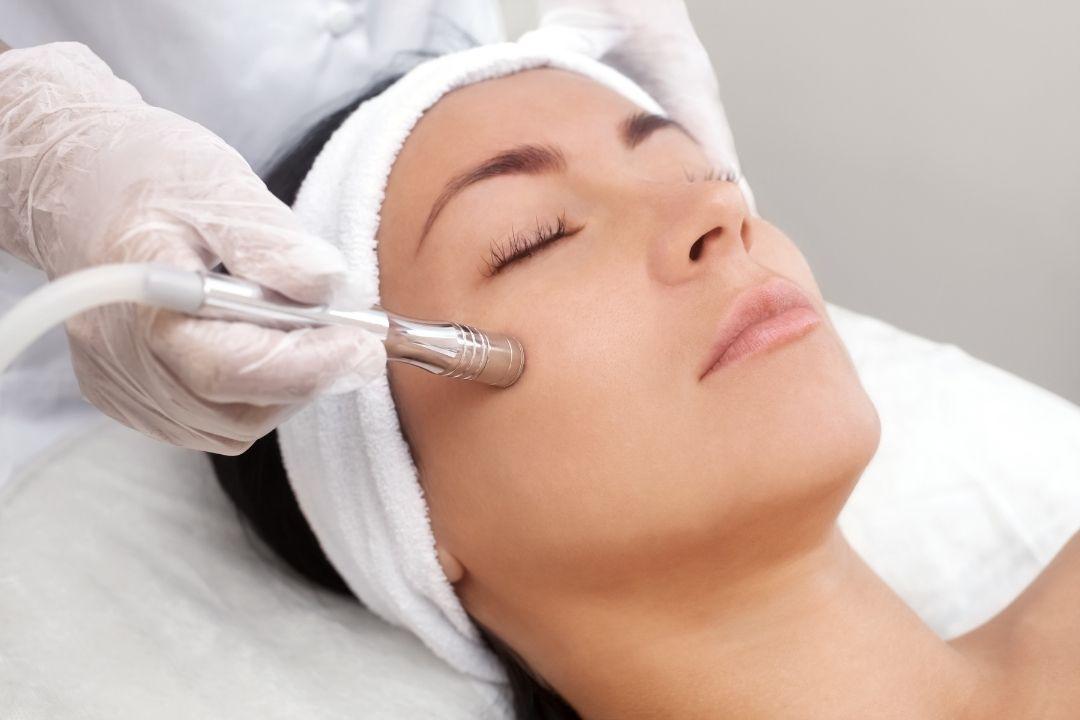
As the oldest inland European settlement in Australia, built on the land of the Darug people, Parramatta's heritage buildings are an important part of Australian history.
Exploring these historic buildings is a great way to learn about how the city we know today was forged and discover the stories of the people who lived and worked in them.
Built in 1793 for John and Elizabeth Macarthur, a young military couple, Elizabeth Farm is one of the oldest homesteads in Australia. Built on Darug land, this bungalow witnessed some turbulent times through Australia’s colonial history including the toppling of governors and a convict rebellion.
John Macarthur was one of the first pioneers in the wool industry in Australia and his wife, Elizabeth, was herself a formidable figure. The family themselves went through their fair share of turmoil including John’s long struggle with mental illness.
Today you can explore this ‘living’ house museum without any barriers or locked doors and learn more about John Macarthur, an influential and controversial figure in Australia’s colonial history.
70 Alice Street, Rosehill | 9635 9488 | Facebook | Instagram | Twitter

Just five minutes’ walk away from Elizabeth Farm, you’ll find the Georgian style bungalow, Hambledon Cottage. Formerly part of the Macarthur Estate, it was built to accommodate the Macarthur family’s growing household and many guests. Hambledon Cottage is known to have hosted some eminent figures of early colony public life. It also served as the home for the family governess, Penelope Lucas.
The story of Penelope Lucas, a governess starting a new life in a harsh colonial environment, is well worth delving into. Join a guided tour and don't forget to book ahead.
63 Hassall Street, Parramatta | 9635 6924 | Facebook | Instagram

Residents of Parramatta might often walk, cycle, or drive down the road named James Ruse Drive but may not know much about its namesake.
The land that Experiment Farm was built on was originally granted to former convict turned farmer James Ruse in 1789 as an experiment to see whether a new settler could farm the land and provide for his family. James Ruse succeeded in this endeavour and sold the land to Surgeon John Harris (namesake of the Harris Park neighbourhood) who then built the cottage in 1835.
Decked out in beautiful period pieces, this Indian-style bungalow is a must-visit for those with an interest in colonial history. The gardens are also a fantastic sensory experience and you have the chance to try on period costume and play colonial-era games. You can also hire the veranda and gardens at Experiment Farm as a beautiful venue for weddings or other events.
9 Ruse Street, Harris Park | 9635 5655 | Facebook | Instagram | Twitter
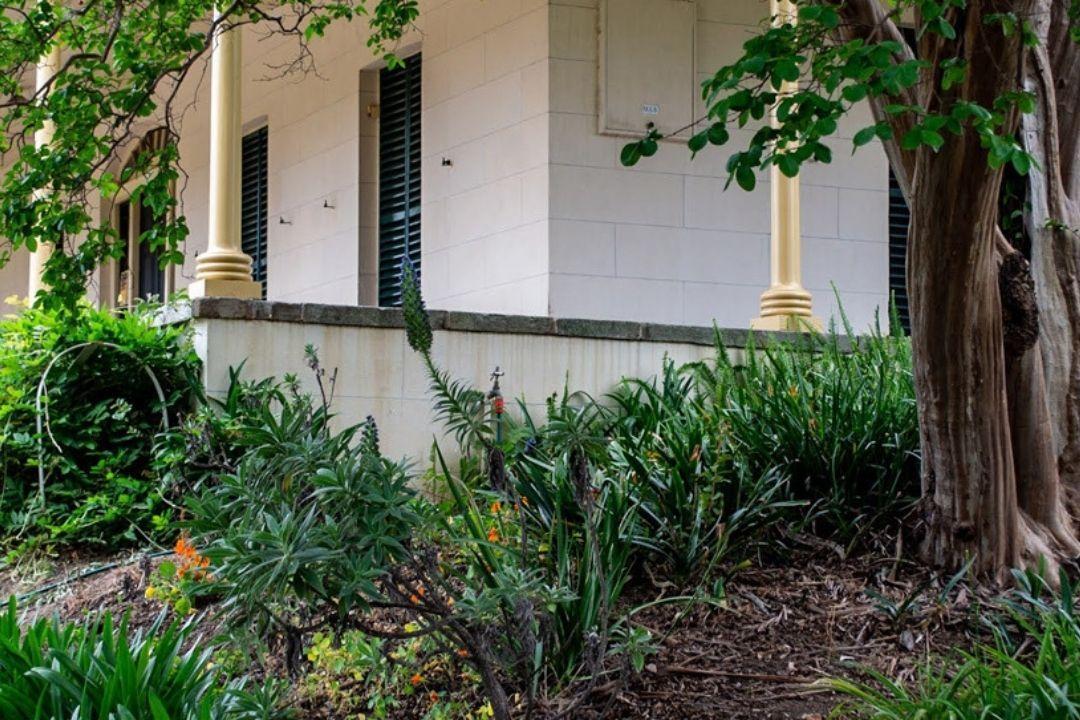
Parramatta is home to many historic churches and none more iconic than the heritage-listed St John’s Anglican Cathedral.
Close to Parramatta station, it’s been in continuous use as a house of worship since 1803 and was the only church in the colony until 1809. Visit St John’s Cemetery to see the final resting place of many of Parramatta’s former residents, located through a lych-gate in O’Connell Street in Parramatta (opposite Aird Street).
187 Church St, Parramatta | 9891 0700 | Facebook

One of six gatehouses in Parramatta Park, the Macquarie Street Gatehouse is the perfect way to enter one of Australia’s most significant historical areas. With more than 100 archaeological Aboriginal sites and 11 UNESCO World Heritage listed Australian convict sites, Parramatta Park is one of the key historical hubs of Parramatta.
Parramatta Park, Cnr Pitt and, Macquarie St, Parramatta | Facebook | Instagram | Twitter
Pick up some tasty food and drink from Georgie Boy by Circa located at George Street Gatehouse or visit the Gatehouse tea rooms for a historical high tea experience.
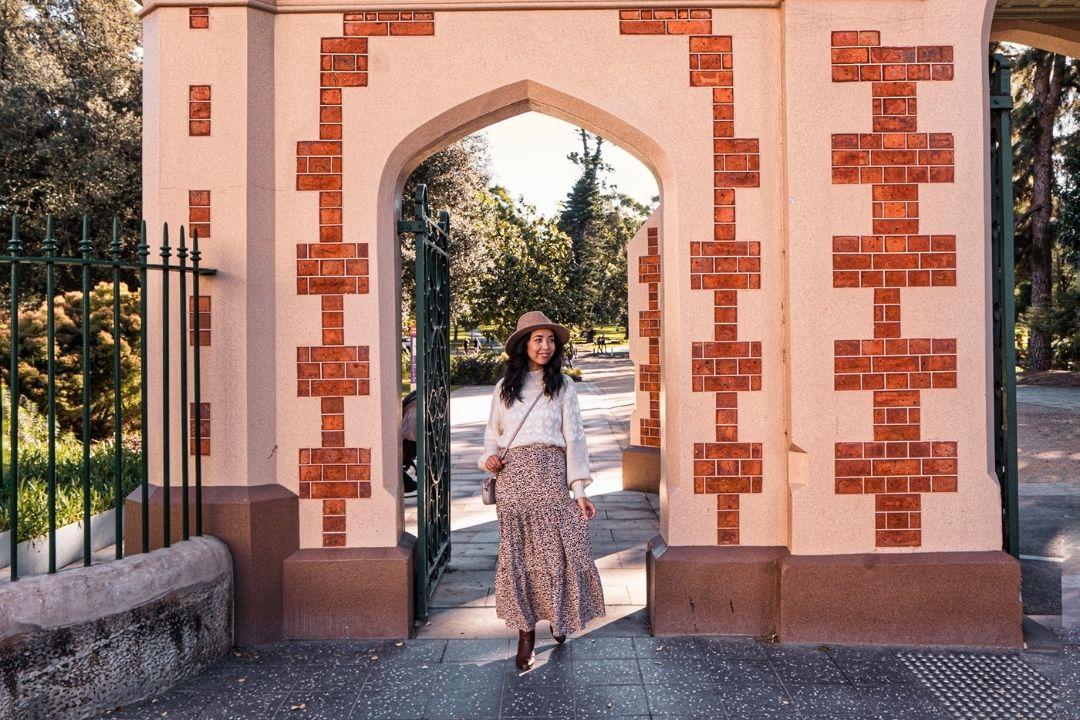
A short walk from Macquarie Street Gatehouse was Old Government House, a UNESCO World Heritage-listed building on the traditional lands of the Burramatta Darug people. Built by convicts, it was the country residence of the first ten Governors of Australia including Governor Lachlan Macquarie and his wife Elizabeth. You can experience the history of the oldest surviving public building in Australia by visiting the various exhibitions at the museum or enjoying a delicious meal on site at Lachlans restaurant.
Parramatta Park, Cnr Pitt and, Macquarie St, Parramatta | 9635 8149
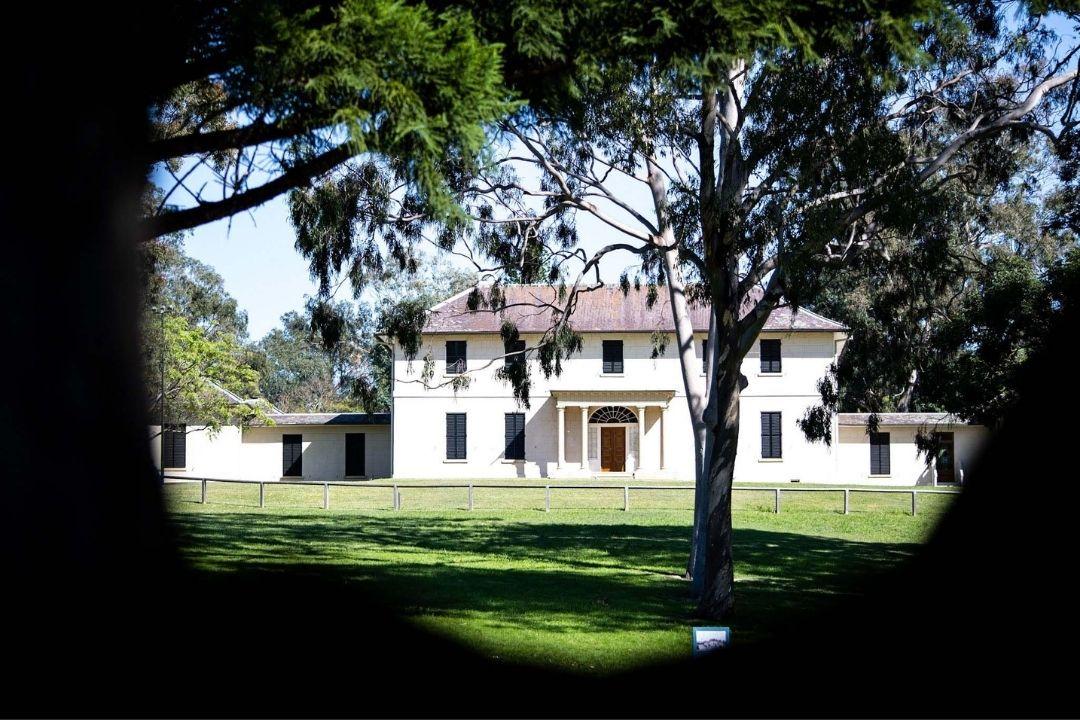
Not far from Old Government House in Parramatta Park you can discover the more modest in appearance, but no less fascinating, Dairy Cottage Precinct.
One of the first government farms, it first belonged to George Salter, an ex-convict turned cattleman in 1796 before getting converted to a dairy. Book yourself on an exclusive guided tour to learn all about the history of Parramatta Park from a colonial and Indigenous Australian perspective.
Parramatta Park, Cnr Pitt and, Macquarie St, Parramatta
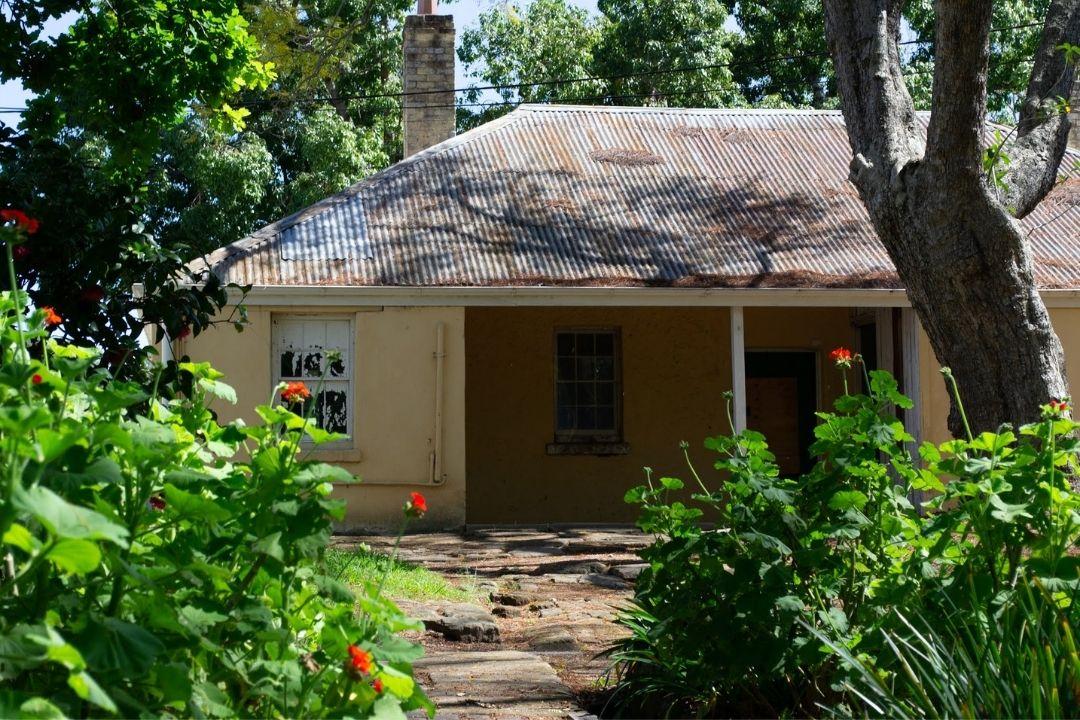
Built in 1821, the Brislington Medical and Nursing Museum initially housed ex-convict John Hodges who paid for its construction with money he won in a card game. The winning eight of diamonds card has been incorporated into the building’s design with its diamond pattern in the rear wall.
Today, this Georgian-style building is a museum where you can learn about the history of medical science and hospital care in Parramatta.
Marsden St & George Street, Parramatta | 0403 764 070 | info@brislington.net
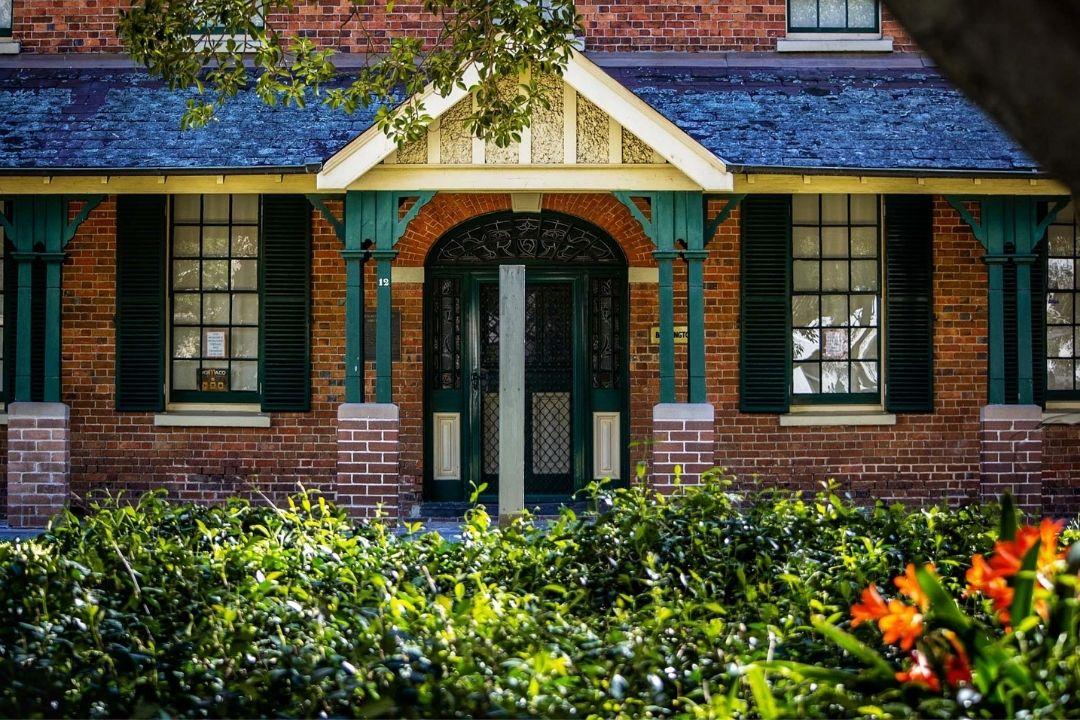
Plan a day out at Newington Armory, a hub of art, culture, and history. Built on the traditional lands of the Wann clan, known as the Wann-gal, Newington Armory was used for military purposes since the late 1800s.
Take a ride on the historic railway that was once used to move missiles and torpedoes, check out the Armory Gallery art exhibitions, ride a Segway or bike, visit BirdLife Discovery Centre or play Disc Golf. Nearby at Blaxland Riverside Park, the double flying fox, tunnel slides and water feature are great for kids. Refuel with the fresh seasonal food and riverside views at the Armory Wharf Cafe.
Newington Armory is definitely one for the whole family. There's something for everyone to enjoy at this dynamic historic venue.
Jamieson Street, Sydney Olympic Park

Popular with kids of all ages, James Ruse Reserve offers fun makers spontaneous water jets streaming from the ground, mushroom fountains and interactive water play guaranteed to put a smile on the dial. BYO picnic and utilise the BBQ facilities on hand.
Hassall Street Harris Park
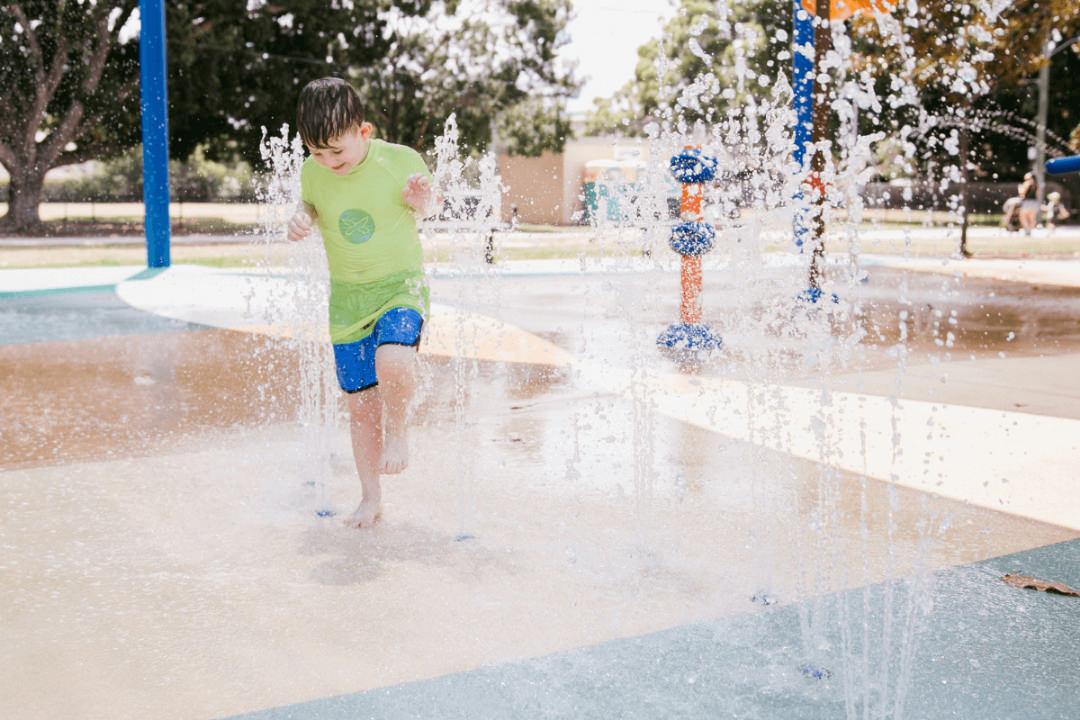
A local gem for some time, Philip Ruddock Water Playground is popular for all the right reasons. Misting tunnels, tipping buckets and miniature creek with hands-on pump, the playground caters for kids big and small. Grab a coffee and cake from nearby café 'The Container' and watch the kids create memories.
Yates Avenue Dundas Valley

This all-inclusive play space is not only home of good times for little people, but the water play section is also a popular feature at the reserve in warmer months. Make it a day out and utilise the parks BBQ and picnic space. Read more about Ollie Webb Reserve.
Glebe Street Parramatta 2150
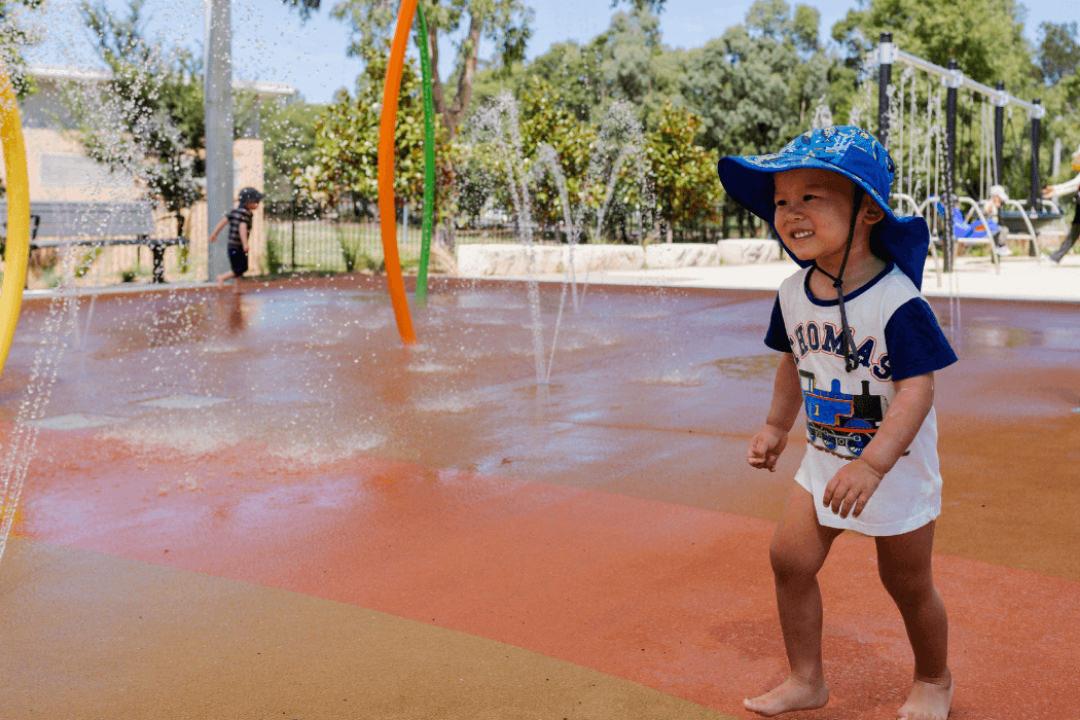
While not specifically a water playground, we couldn’t go without mentioning Blaxland Riverside Park. One of the many play options at the park, the water play circle is definitely one of the most popular on warmer days. The Armory Wharf Café nearby fuels mum and dad while kids feed off the fun!
Jamieson Street Sydney Olympic Park

The twin-towered sandstone structure of St John’s has been a Parramatta landmark for 200 years. Standing in the very heart of the commercial and civic district, it’s a community meeting point as well as a place of worship. Both the history and the material fabric of the church are closely tied to a number of major figures in the development of New South Wales as a colony.
According to the NSW State Heritage Register, St John’s is ‘the oldest church site and continuous place of Christian worship in Australia’. In 1797 or 1798 Governor Hunter laid the foundation stone for a parish church here, and an official Return of Public Works records that by September 1800 ‘an elegant church’ had been erected. Yet it was incomplete: when Governor King took office that month, he noted that the church was still in the process of being roofed. It was not until April 1803 that the first service was held there, with the Reverend Samuel Marsden presiding.
The construction of the church was highly significant both for the town and for the colony as a whole. Governor King had already declared St John’s Parramatta a parish in 1802, making it one of the two oldest Christian parishes in Australia. The parish church opened here in 1803 was the first permanent church building in Australia and quickly became a focal point for the Parramatta community.
Structural problems with the building, largely due to the swampy land on which it was sited, became apparent as early as 1807. When Governor Macquarie ordered repairs and improvements to be carried out between 1817 and 1819, Mrs Macquarie was actively involved in the choice of a ‘Gothick’ style for two new towers modelled on those of a ruined 12th-century church in Kent, England. She gleefully referred to the resulting structure as ‘my Westminster Abbey!’ although it was Lieutenant John Watts who actually drew up the designs – and convicts, of course, who did the building work.
Storm damage, structural problems and other damage due to neglect led to the decision in 1852 to replace the entire building, retaining only the towers from the Macquarie era.
St John’s parish church became a cathedral in 1969 when the first Bishop of Parramatta was appointed. Today, services are held there in four languages – English, Mandarin, Cantonese and Farsi – testimony to the multicultural nature of the Parramatta community. The church grounds are open to the public and are a popular place for picnics.
The history of Parramatta’s Roman Catholic Cathedral in some way mirrors, in other ways diverges from, that of the Anglican Cathedral.
Like St John’s, St Patrick’s started out as a parish church and was originally established in the early colonial period – although, given the dominance of the Anglican establishment in New South Wales, it took longer for land to be granted for a Catholic church than for a Protestant church in Parramatta. Consequently St Patrick’s was a generation younger than St John’s, opening for worship in the 1830s rather than the early 1800s.
In the period 1878-1883 a tower and spire were added to St Patrick’s, and these were the only intact architectural features of the older building that were retained when the church was rebuilt in the 1930s to accommodate its burgeoning congregation. Nevertheless, the 1930s church re-used stone and other materials from its 1850s predecessor, so that the two buildings were similar in appearance.
In 1986, St Patrick’s became a Cathedral when the Roman Catholic Diocese of Parramatta was formed. However disaster struck just ten years later, when much of the building was destroyed by fire. Rebuilding proceeded swiftly, with the project assigned in 1997 to architect Romaldo Giurgola, the creator of the new Australian Parliament House in Canberra.
Giurgola’s design for St Patrick’s produced an award-winning piece of public architecture in which surviving portions of the old building remain alongside an extremely modern new structure. Sculptures in stone, wood and metal create interior interest and help to unify the various parts of the building. Dedicated in 2003, the new St Patrick’s Cathedral is a peaceful, light-filled place that is a joy to visit.
More than 60,000 years of Indigenous history make up present-day Parramatta’s city and surrounds. So what are the stories that make Parramatta unique?
The Parramatta area is a great place to explore local Aboriginal culture, and a walk through Baludarri Wetlands will offer an insight into this heritage. They are named after Baludarri, a young Darug man, who is known – through diary entries and expedition journals – to have lived around Parramatta as a child. He was the son of Darug elder Maugoran.
Baludarri (meaning leatherjacket, a type of fish, in Darug language) is described through the retelling of British colonists as a confident and resourceful man. The river, wetlands and surrounds were an important source of food, as well as a place for meeting and trade for the Darug nation. Baludarri was said to be a skillful fisherman, who used the Parramatta River and eastern estuaries to provide food for his community.
As you stroll along the foreshore, notice the depictions of traditional Aboriginal foodstuffs, native plants and fishing activities underfoot. The eye-catching Jamie Eastwood designed artwork provides a snapshot of Parramatta’s history before 1788 to the present day, from an Aboriginal perspective, and includes signage to explain the significance of each section.
As you continue on, take a moment to acknowledge the transformation of those riverbanks when, in 1788, Governor Arthur Phillip sailed in and declared the land suitable for settlement. In the ensuing years, the traditional custodians were forced to move downstream or most were killed in a smallpox epidemic in 1789. After the founding of the new colony, in 1791, Governor Phillip adopted the name he interpreted from the traditional custodians, and so Parramatta was born. Stop beneath the lemon-scented gums near Lennox Bridge to hear the Reconciliation Soundscape and acknowledge the traditional owners of this land, the Burramatagal of the Darug language group.
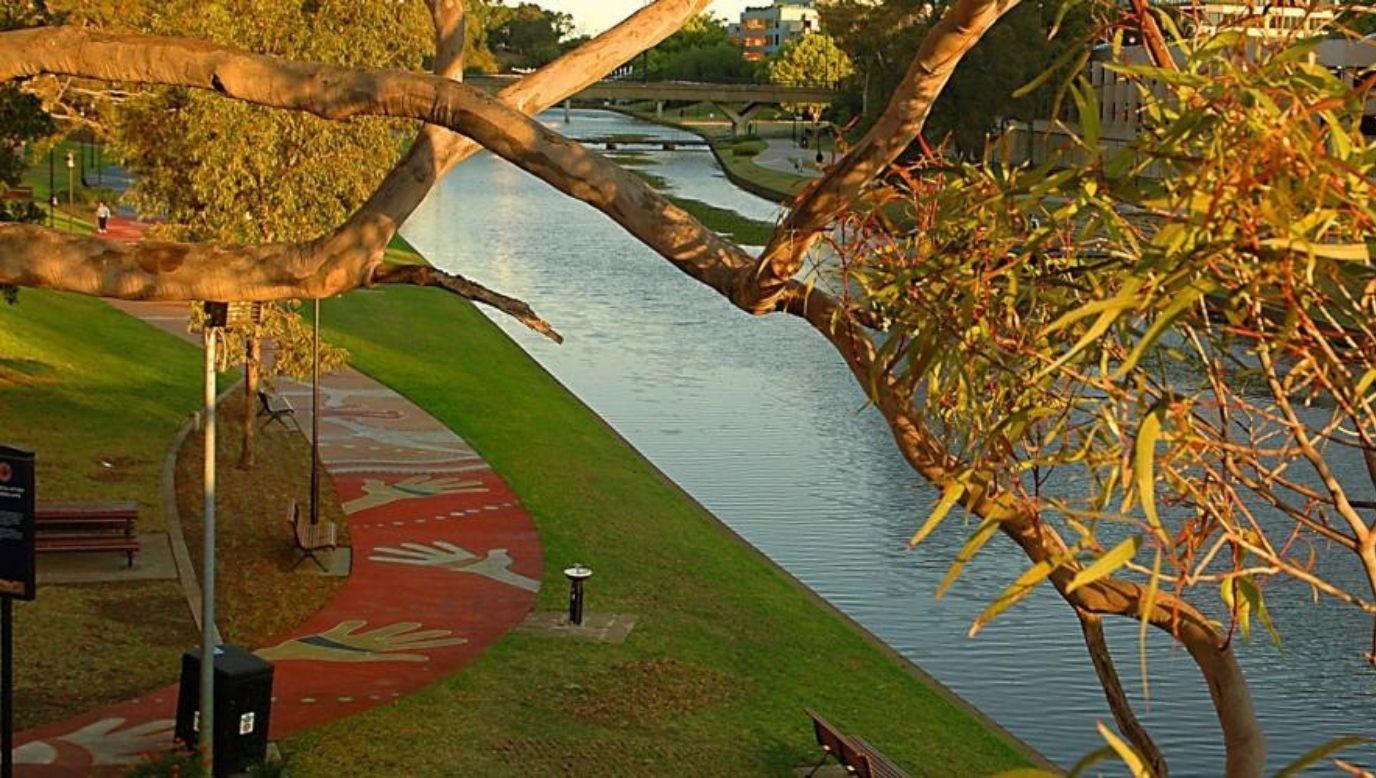
Next stop: Parramatta Park, with its strong connection to the Burramatta people. Here, you’ll see pockets of open bushland that were created by the Burramatta clan using traditional ‘firestick burning’ methods, while the native trees, shrubs and grasses seen today were also thriving prior to European settlement.
Along the nearby stream, middens of freshwater shells have been found, while stone axes have been uncovered in the area now known as the Crescent. This was an important trading and meeting point for clan groups in the region.
Sites significant to Indigenous history can also be found off this beaten track. The area around St John’s Cathedral is where Governor Macquarie first hosted a gathering of local Aboriginal clans in 1814. This became an annual event catering to about 300 people.
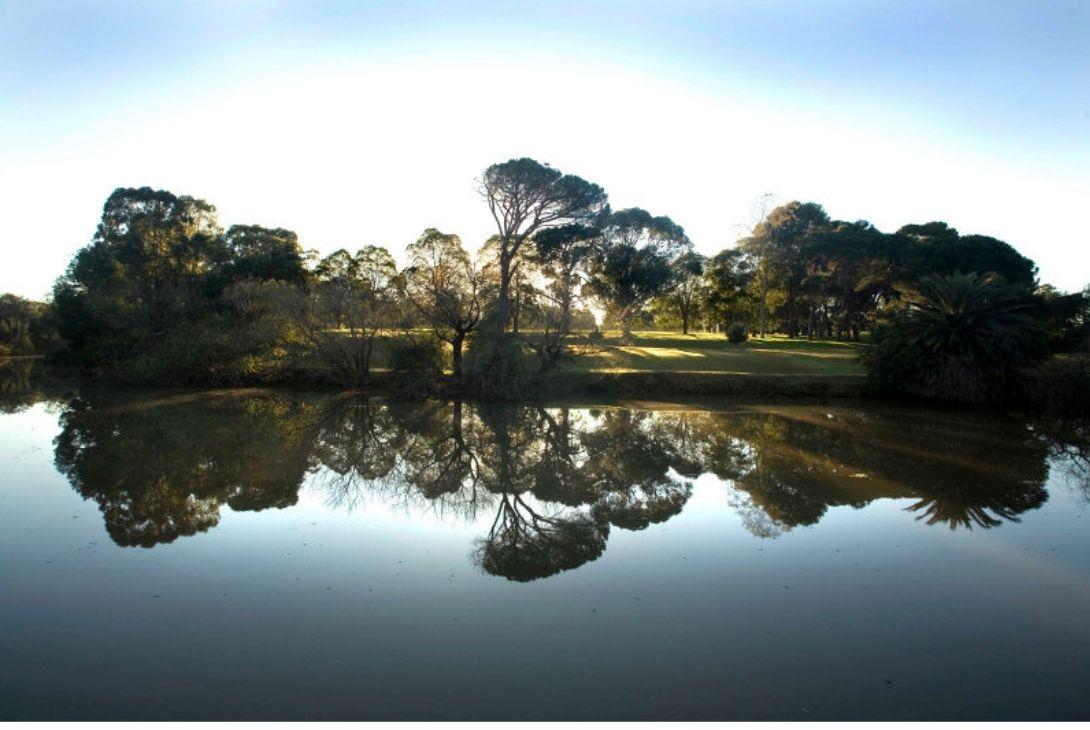
Like Parramatta Park, Lake Parramatta offers strong evidence of the Burramatta people, with its hand-stencilled paintings, cave shelters, stone flakings, scar trees and shell deposits. While visiting, take a stroll around the Arrunga Bardo Aboriginal Bush Food Garden. Follow the tracks to find out which plants were used for food, medicine, weaving or hunting. Today, all of these histories are woven into a new global city, though Parramatta is not leaving its past behind.
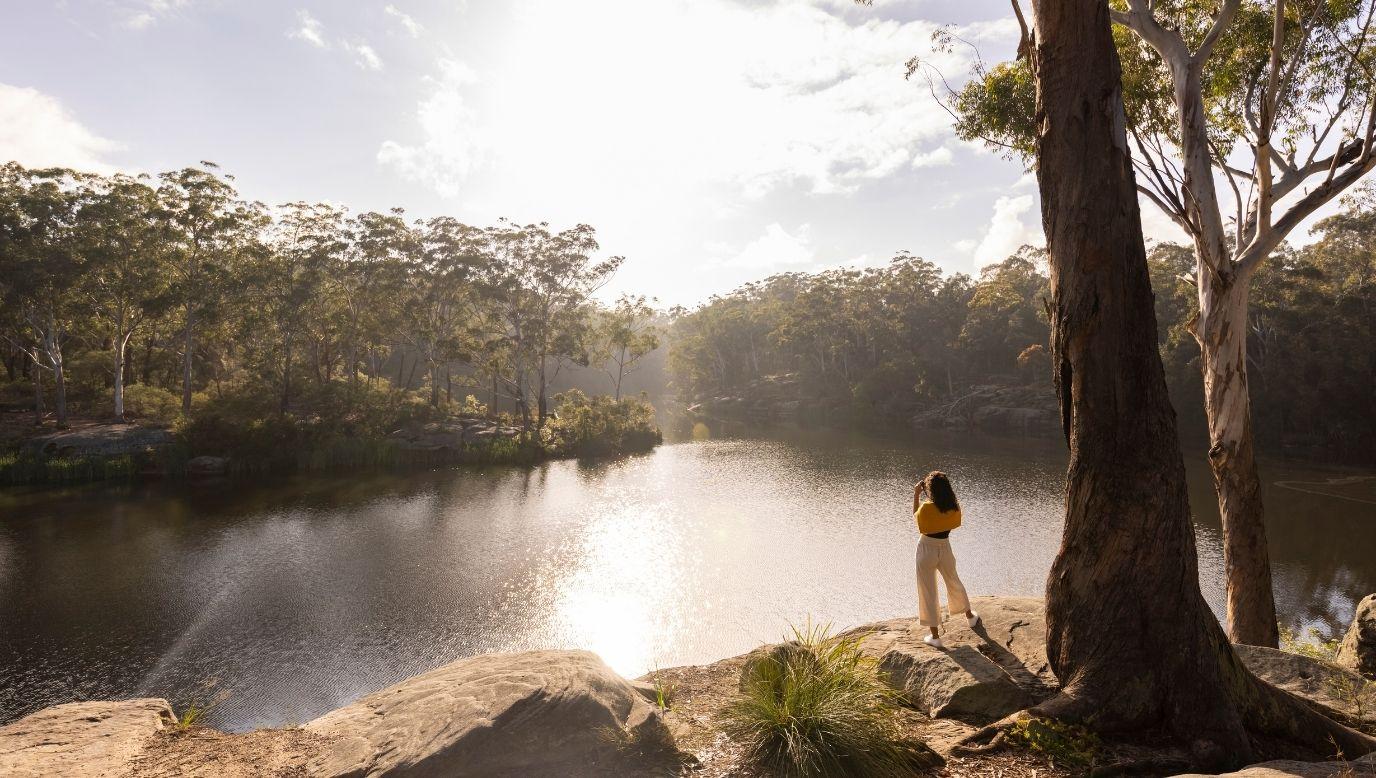
As mainland Australia’s oldest military barracks, the NSW Lancer Barracks and Memorial Museum is a site of national and international heritage significance. It has been home to the Royal NSW Lancers for over a hundred years.
When Governor Macquarie arrived in New South Wales, he found that much of the military accommodation was in a bad state of repair due to being constructed with poor quality materials.
As the settlement in Parramatta grew due to the fertile lands and proximity to the river, it was important for the military to be positioned here to maintain control over the local convict population.
The Parramatta Lancer Barracks precinct to be built to provide better quality accommodation for 100 British soldiers.
Parramatta’s Lancer Barracks heritage site is celebrating 200 years of history this year. Home to 1st/15th Royal NSW Lancers, a current Australian Army Reserve light cavalry regiment, it is Australia’s most decorated military unit.
Lieutenant John Watts was selected to be the barracks’ architect and engineer. He’d already established a strong reputation in the colony from the military hospital he designed in Sydney’s Observatory Hill. In Parramatta, he also designed the military hospital, the towers of St John’s Church, and parts of Government House.
Completed in 1820 were Bob’s Hall (the British Commanding Officer’s office and quarters) and the two-storey barracks block to house British soldiers.
In the 1830s as Sydney began to prosper as a result of the wool trade, Parramatta’s barracks became the Headquarters of a Regiment as accommodation was more affordable.
The site was also used as the Police Barracks between 1867-1897 before returning to the military again. It has since been home to the NSW Lancers (made “Royal” in 1935).
Many of the soldiers in the Royal Lancers regiment served in the Boer War, First World War and Second World War and you can see the memorial to those whose lives were lost on site. Additional buildings were added to the Lancer Barracks precinct, including the Staff Sergeant’s cottage, the drill hall/classroom (which still serves its original purpose today), and Linden House, now home to the Lancer Museum.
In the past 200 years, the site has been used for different purposes, going through various extensions and refurbishments but the buildings have stood the test of time and are still in use today. Lancer Barracks is now listed on the Register of the Australian National Estate and is classified by the Australian National Trust.
You can take a guided tour of the NSW Lancers Memorial Museum to discover the stories of the regiment’s service in the Boer War, First World War and Second World War.
The museum is a historical treasure trove of 7000 heritage listed items, including weaponry, diaries, uniforms, flags, and documents from battle.
Don’t miss their fully restored ACE Matilda Tank once used in an armoured assault at Balikpapan, Borneo 1945. Discover the stories of the regiment’s service in battle in the Boer War, First World War and Second World War.
2 Smith Street, Parramatta
A section of the original Naval explosives depot has been retained for visitors to explore. Known as the Newington Armory, a highlight of the heritage precinct along the scenic Parramatta River. Visitors to Newington Armory can also Ride the Rails of the historic railway that was once used to transport missiles and torpedoes around the Armament Depot. The Armory Gallery, theatre, amphitheatre and studios are also worth checking out.
The Armory Wharf Café at the edge of Newington Nature Reserve is a top place to perch before or after exploring the surrounding parklands and precinct. The licensed venue has striking 270-degree views across the Parramatta River to mangroves and the post-industrial working wharf landscape. The boardwalk café is popular with families and active types who want to refuel on lunch options such as crispy battered flathead fillets and chunky chips or grilled Atlantic salmon with a corn, tomato and coriander salsa verde on the side.

Budding birdwatchers should prepare for their visit to the BirdLife Discovery Centre by training their eagle eye on the Sea-Eagle Cam set up to observe the resident pair of white-bellied sea eagles in their nest. After viewing the feed of the nesting birds remotely, you can then explore their habitat in the Armory where you might be lucky enough to spot them soaring overhead on up-swept wings in the Newington Nature Reserve.

Western Sydneysiders unite at Blaxland Riverside Park, the spectacular waterside park located along the Parramatta River. Keen cyclists can either BYO bike or hire bicycles from the historic gatehouse in the Armory, which leads to shared cycle paths and paved roads that loop around the picturesque precinct. After you're done walking, cycling or running along the riverside encourage the kids to get their wiggles out at the biggest playground in Sydney, where you will find free barbecues and a multitude of pretty picnic spots. The park is spread over three hectares and includes double flying fox, mega swing, tunnel slides, multi-level treehouse and water play area. Nature lovers note the Narawang Wetland and Badu Mangroves are also nearby.

Newington Armory has evolved from its military-industrial origins into a unique arts precinct, including a theatre, outdoor amphitheatre, artist studios and an exhibition space, which features the longest continuous gallery wall in Australia.
The Armory has free exhibitions throughout the year, plus film festivals, public art, cultural activities and kids activities. You can even meet resident artists for a behind-the-scenes tour of the visual arts studios and to speak with them about their works and see the works in progress.
